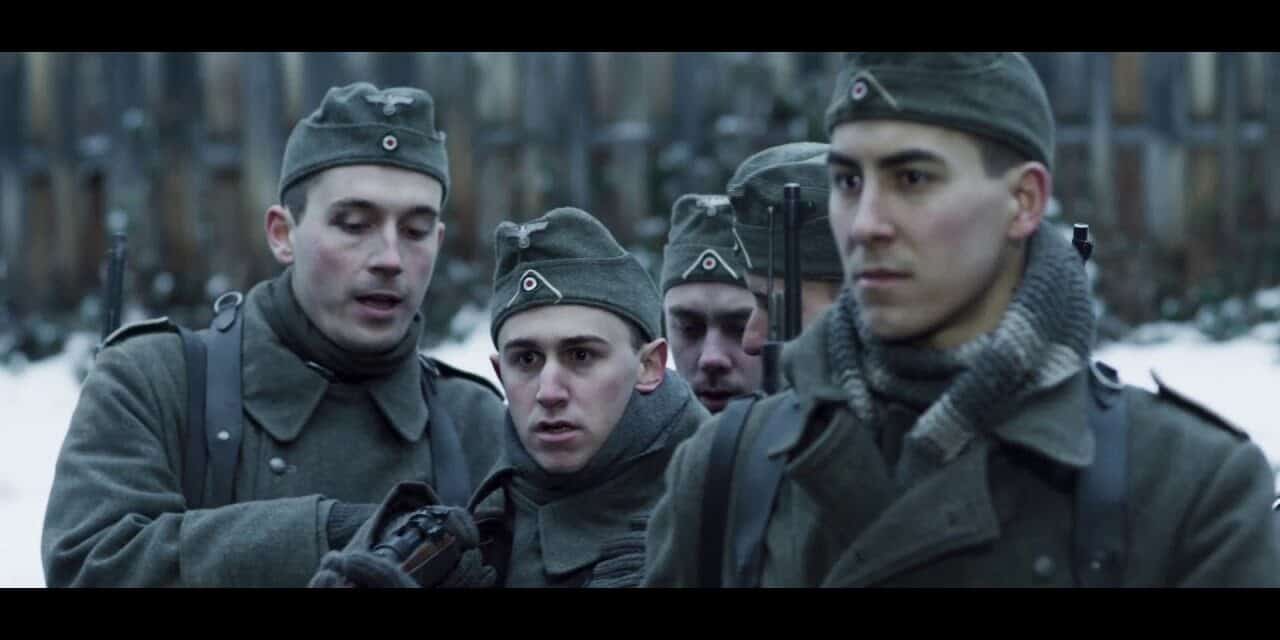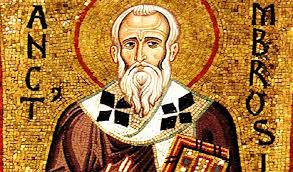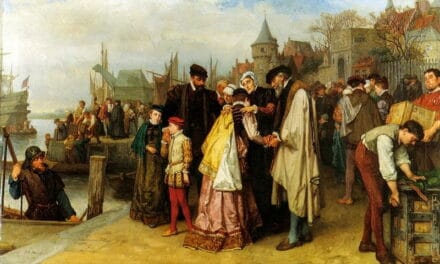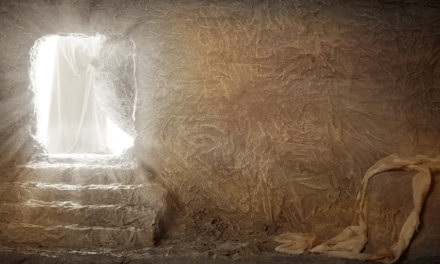This 131st, episode is titled, Behind Enemy Lines.
Following up their conquest of Constantinople in 1453, the Turks conquered most of the Balkans. They now controlled the former Byzantine Empire and the substantial region of Armenia. They required the Eastern Orthodox patriarchs in Constantinople to obey their rules and policies. Ottoman Turks employed their Christians subjects in key positions in the military and government. Bureaucrats who’d served the labyrinthine Byzantine system made excellent court officials in the new realm. And thousands of young Christian boys were inducted into the Janissaries; elite fighting units renowned for their ferocity and loyalty to the Sultan. If you want to read some fascinating history, dig into the story of the Janissaries.
Throughout Turkish lands, Christians and Jews were given a measure of autonomy in running their own affairs. Note I said “a measure.” They weren’t free to live however they pleased. While there was a general, persistent low-grade animosity between Christians and their Turkish masters, there were periods of intense oppression and outright persecution.
Western Europeans were indifferent to the plight of Eastern Christians. They were anxious to maintain a favorable posture toward the Ottomans so as to have access to the rich trade that flowed between East and West. The conspiracies and conniving that went on between the competing nations of Europe for this rich trade was a thing of legend. Sadly, it was a prime example of how the desire for wealth trumped a deeper and more pressing humanitarian directive.
Thank God we’ve moved past that today, huh?
Keeping our historical perspective, the lack of concern on the part of Western Europeans for their Oriental brothers and sister living under the Ottoman yoke isn’t so hard to understand. After all, how many years had it been since the rift broke East from West? It had been almost exactly 400 years. And the LAST time West met East was in the brutality of the Fourth Crusade that shattered Constantinople and ultimately left it vulnerable to the Turkish conquest.
At the end of the 16th century, Jeremias II, patriarch of Constantinople, ordained Bishop Job as the first patriarch of Russia. That made Moscow a patriarchate on the same footing as the much older centers of Rome, Constantinople, Alexandria, Antioch, and Jerusalem.
In the final yrs of the 16th century, four bishops along with the metropolitan of Kiev, created what became known as the Uniate Church. These churches became an Eastern branch of the Catholic Church. They looked to the Roman Pope as their spiritual head and embraced Roman doctrine. But they kept the Byzantine liturgy and the right of their priests to marry. For three centuries, Uniate Christians were the target of fierce persecution by Cossacks. During the Cossack-Polish War of 1648–57, many Uniates were slaughtered.
Eastern Orthodox or as they’re sometimes called, Greek Orthodox, theologians rejected the Protestant Reformation’s emphasis on the doctrine of justification by faith alone. But when Cyril Lucaris, patriarch of Constantinople, published a work in 1629 that seemed influenced by the theology of John Calvin, it sparked a firestorm of controversy and fierce opposition from other Orthodox theologians. One chapter said Scripture was infallible and inerrant, its authority superseding that of the Church. Another chapter said sinners are justified by faith rather than works and that it’s Christ’s righteousness applied by faith to repentant sinners that alone justifies.
The Turk Sultan Murad IV conspired to assassinated Patriarch Cyril Lucaris, because he was regarded as a theological as well as a political troublemaker. The Janissaries were sent to kill him on June 27, 1638; his body was dumped over the side of a ship.
The years 1598-1613 we labeled the “Time of Troubles” in Russia. It was a time of transition from the Rurik Dynasty to the Romanovs. The years saw a famine that killed some two million Russians, one-third of the populace. It also witnessed the Polish-Muscovite War when Russia was occupied by a Polish-Lithuanian Consortium and endured endless civil uprisings. The Romanovs went on to rule Russia for the next 300 years. During the period from Peter the Great thru Catherine the Great, Russia emerged as a military competitor to the French, Spanish, English, Prussians, and Hapsburgs. Her army and navy grew and she gained large tracts of land at the expense of Sweden, Poland, and Turkey.
Russia’s conquests brought many non-Orthodox Christians under her control; mostly Roman Catholics. It also brought in many Jews. East European rulers were wary of the new Russian bear and how it’s aggression could unsettle the careful balance European diplomats had managed to secure. In 1763, King Louis XV of France declared, “Everything that may plunge Russia into chaos and make her return to obscurity is favorable to our interests.”
The impact of the reign of Peter the Great on Russian society was profound. Fascinated by all things military, Peter was as ruthless with enemies as he was charming with those aimed to woo. He assumed the arduous task of transforming Russia from an agricultural backwater into a modern economic powerhouse. During a more than year-long tour of Germany, the Netherlands, England, and Austria in 1697–8, he gained a working knowledge of economics, farming, munitions, and ship-building. He visited schools, hospitals, and factories. He was warmly received by kings and queens.
Once back in Russia, Peter used forced labor to build the port city of Petersburg as a “window on the West.” In 1713, it became the capital of Russia. He finally defeated the Swedes, gaining more territory. His trip to western European countries provided him with new insights into how to streamline Russia’s military, government, and schools.
His opponents came from the clergy of the Russian Orthodox Church as well as what was called the “Old Believers and Ritualists” drawn from the ancient Russian nobility and the Cossacks. The clergy said Peter was engaged in a blasphemous arrogance by moving the capital from Moscow, which they regarded as a “Third Rome” to Petersburg.
Unlike the clergy, the Old Believers had a different beef with Peter. They were enraged by what they called his irreligious behavior. He failed to support their departure from the Russian Orthodox Church due to a bruhaha over how to make the sign of the cross. These Old Ritualists broke with the Russian Church in the 1650s when the Metropolitan Nikon revised the liturgy along a more Byzantine fashion. Nikon said the sign of the cross was to be made with the first 3 fingers of the right hand, not 2 fingers as was the usual practice. Those who refused to put up 3 fingers were deemed heretics.
So à “Off with is head.”
In 1682, a leader of the Old Believers was burned at the stake. Some of his followers living in their separate communities engaged in mass suicides.
Peter’s opponents among the clergy were worked up about his requiring them to adopt modern and Western clothes. Russian nobles were ordered to shave unless they paid a tax. Some Russian men assumed being bearless would bar them from heaven.
Peter professed faith in Christ, but it’s questionable if he did so for purely pragmatic reasons. He venerated icons, quoted Scripture at length, cited the Liturgy by heart, and sang on occasion in church choirs. But he had little patience with the Patriarch of Moscow who opposed his “Western” innovations.
One critic claimed Peter the Great’s actions toward the Church in Moscow “led to a cultural shock from which Russia never recovered.” When Patriarch Adrian died in 1700, Peter postponed the election of a new patriarch. That dealt a major blow to the traditions and the structure of the Russian Orthodox Church. In 1716, Peter declared that he alone ruled Russia, setting himself over the church.
The reigns of the next several Romanovs were marked by intrigue and palace coups.
For example, Peter III had a brief reign. He married the German-born and Lutheran-raised Catherine II, who converted to Orthodoxy so as to make entry into marriage smoother. Peter disbanded the secret police and favored religious toleration. He despised the Orthodox Church and was accused of leaning toward “Lutheranism.” A conspiracy headed by his wife’s illicit lover forced Peter’s abdication, then she had him murdered.
Catherine became the ruler of Russia being assigned the title Catherine the Great. She built on the expansionist policies of Peter, adding 200,000 square miles to Russia. Her armies put down the Cossack Rebellion of 1773–5 and extended the borders of Russia in Crimea and Poland, Belarus, and western Ukraine. She centralized and streamlined the government, which was then run by civilians with skills like those of their counterparts in Western Europe. Russia, traditionally introspective and self-congratulatory, looked for a while to be opening to the outside world, willing to embrace the culture of its neighbors.
Catherine has sometimes been portrayed as an “Enlightened Despot.” She was steeped in the literature of the French philosophes. Diderot and Grimm spent time at her court, as did other western thinkers. She mostly refrained from terror in dealing with her opponents in bringing reforms.
In 1773, Catherine promoted a measure of religious toleration. She defended the Jesuits after the papacy dissolved their Order. Both Roman Catholics and Protestants enjoyed limited religious rights.
But, Catherine’s openness to Enlightenment ideas had limits. She took over monasteries and turned them into state property. She was hostile to the Masons and feared the spread of subversive republican ideas by partisans of the French Revolution. She made three decrees that forced Jews to settle in a region called “the Pale” stretching from the Black to the Baltic Sea. It encompassed present-day Poland, Latvia, Lithuania, Ukraine, and Belarus. Jews lived in the Pale under harsh poverty and frequent pogroms.
18th-century religious life in Europe and Asia is a harbinger of what lies ahead for us as we wrap up our narrative of church history over the next episodes.
The concern expressed by Roman Catholic leaders in the face of the Reformation was that if the Protestants were allowed to break away to form their own churches and movements, the fracturing would never end and Mother Church would disintegrate into a bo-zillion daughters who looked nothing like their mother. That concern has largely proven true, as is evidenced by the literally tens of thousands of different denominations, movements, groups, and independent churches existing worldwide, all calling themselves faithful followers of Jesus and Home of the True Gospel.
It’s during the 18th C in Europe, Asia, and to a lesser extent in the New World that we see that splintering reaches an exponential rate.
And that’s why our review of the narrative of church history must necessarily come to a close soon. Because to carry one we’d need to track the growth and development of literally dozens of groups and that would be a royal pain in inflicted tedium. We could deprogram hardened terrorists by making them listen to that; or torture them.
But, that might be a good place for burgeoning podcasters to start their own podcast. I know you’re out there. You’ve listened to CS for a while and regularly say to yourself, “I could do a better job than this.” I’ll bet you could. So–why don’t you? Start your podcast where we’ll leave off. Track the origins of your group to where we end and take it from there.
As we end, I again say thanks to all you subscribers who write such glowing reviews on iTunes & Apple Podcasts, as well as those who check-in and give the CS FB page a like or leave comments.
As you may or may not know, or care for that matter, I’m a pastor at an independent Evangelical Christian church in SoCal. If you like CS, don’t find my voice too annoying, and would like to hear something a little different, check out the church podcast. I teach twice a week; one is a general expository survey of the Bible. The other is a sermon where we go in-depth in the same passage. You can find it in iTunes & Apple podcasts by searching for Calvary Chapel Oxnard or going to the calvaryoxnard.org website.
And for those who are really interested, I’ll soon be starting a YouTube channel where the first project with be a video version of CS.








Although I am aware that “[almost] all good things must come to an end,” still it saddens me a bit that the book must soon close on Communio Sanctorum History of the Christian Church. If you ever had any doubts about the impact and the necessity of what you have provided, then take a look at the sites following and their comments. At the risk of repeating myself, as you set out to provide a true, broad, and “more complete” (howbeit not exhaustive) overview of church history, in that you could not find anything of the sort– well, you have succeeded. You deserve a resounding “Congratulations,” as well as a heart felt “Thank you” from those of us who have desired the same and found it in Communio Sanctorum.
It was also a pleasure to get to meet “the historian” as well as the history. One of the things that captivated and kept my attention was the “personal touch” in each episode. I feel as though we have gotten to know you, not only as an “amateur historian” (since I know you won’t don the title of “historian” alone), but as a comrade and a friend. It will be a pleasure to meet you some day face to face, if not on this globe then in the Kingdom’s Fulfillment Come.
Thank you for providing this labor of love. I will return to the beginning of the podcast, where most of my interest rests, and use it as a spring board for further study as time allows (“as time allows”… I’m chuckling to myself). May God more than richly bless you and yours, till His Kingdom Come.
Lem –
Thanks for the kind and once more, encouraging words. You’ve been a real blessing to me in this project and are one of the several names I think of as I’m putting a podcast together.
Yeah, we’ll be closing out this season of CS soon. But remember, after a break, we’ll be back with some more episodes where we’ll go into more depth. I’m looking forward to those quite a lot.
Lance